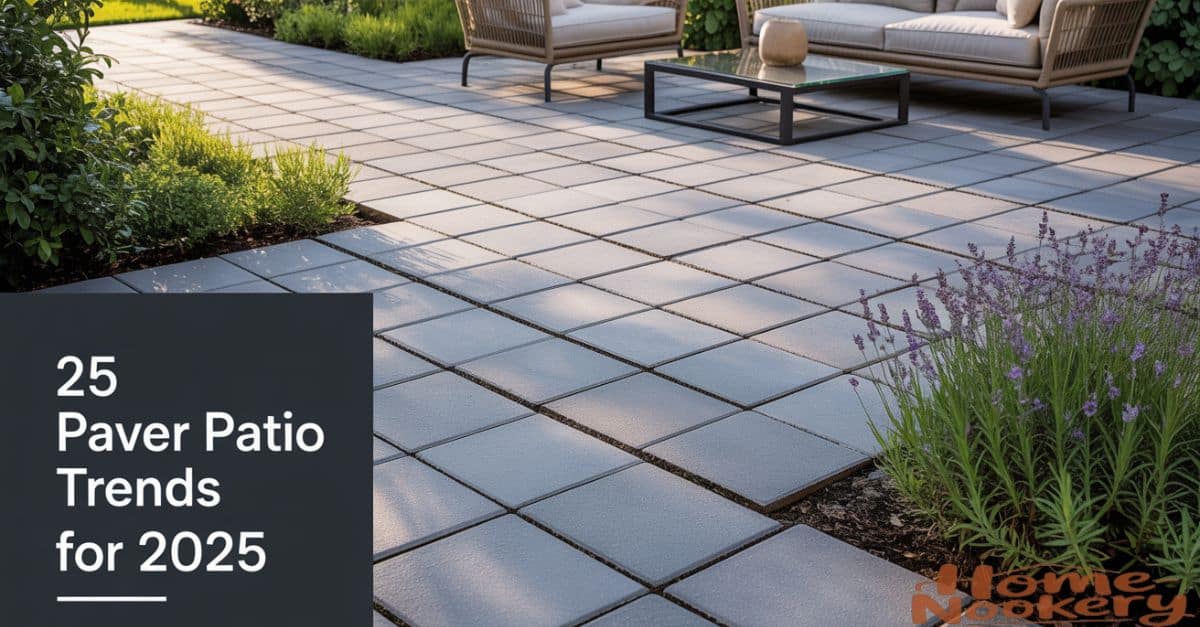The humble backyard patio has evolved from a simple concrete slab to an outdoor oasis that rivals interior living spaces. As we move deeper into 2025, homeowners are increasingly seeking sophisticated outdoor environments that blend seamlessly with nature while providing all the comforts of indoor living. This year’s paver patio trends reflect our collective desire to create personalized outdoor sanctuaries that are both functional and aesthetically pleasing.
I’ve been designing outdoor spaces for over 15 years, and lemme tell you – I’ve never seen innovation move this quickly. The materials, techniques, and design approaches available today would have been unimaginable even five years ago.
1. Biophilic Paver Designs
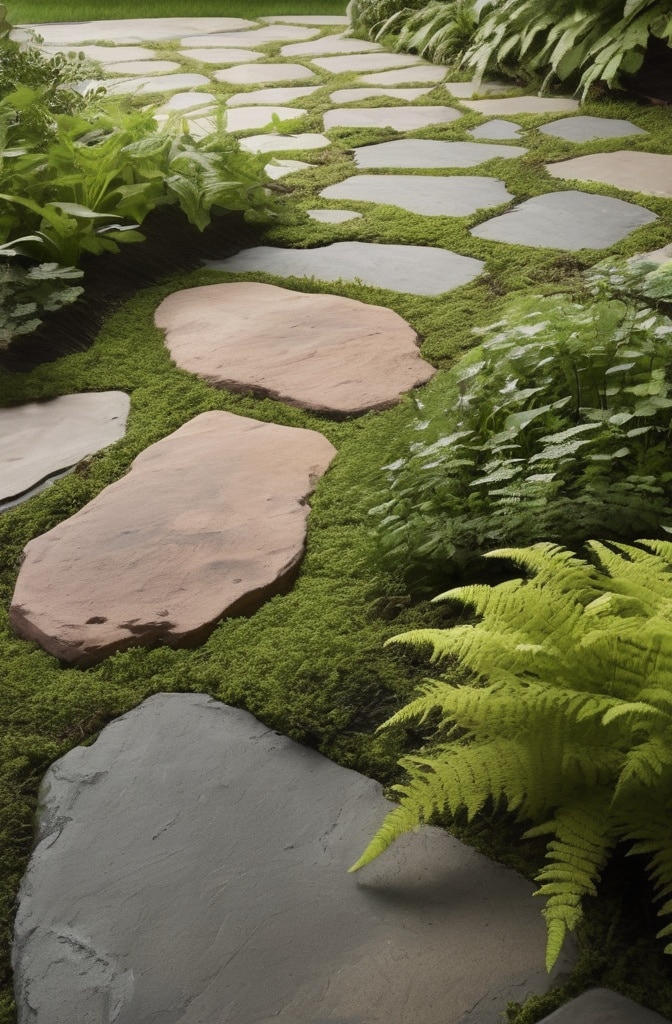
Biophilic design—connecting humans with nature—has exploded in popularity. In 2025, we’re seeing pavers that mimic natural patterns found in forests, riverbeds, and geological formations. These organic-looking pavers create spaces that feel like a natural extension of the surrounding landscape.
The newest biophilic pavers incorporate subtle color variations that resemble moss, lichen, or stone weathered by centuries of natural elements. Some manufacturers are even embedding actual organic materials into their pavers. Its not just about looks anymore – its about creating a genuine connection to the earth beneath our feet.
2. Smart Pavers with Integrated Technology

Technology has finally made its way to our patios in meaningful ways. Smart pavers with built-in LED lighting, heating elements, and even wireless charging capabilities are gaining traction among tech-savvy homeowners.
These intelligent paving systems can be controlled via smartphone apps, allowing users to adjust lighting patterns, temperature settings, and other features with a swipe. Imagine stepping onto a gently warmed patio surface on a chilly evening or having your pathway subtly illuminate as you walk across it. The future is literally underfoot.
3. Permeable Paver Systems

Environmental consciousness continues to drive innovation in the paver industry. Permeable paver systems, which allow rainwater to filter through to the soil below rather than contributing to runoff, have become a staple of eco-friendly outdoor design.
The latest permeable systems go beyond basic functionality, offering sophisticated patterns and colors that don’t sacrifice style for sustainability. Many municipalities now offer tax incentives for installing these systems, making them as appealing to the wallet as they are to the environment. I’ve installed dozens of these systems in the past year alone, and my clients are amazed at how they preform during heavy downpours.
4. Oversized Pavers

The trend toward large-format pavers shows no signs of slowing down in 2025. These expansive pavers, often measuring 24″ × 36″ or larger, create a clean, contemporary look with fewer joint lines.
Oversized pavers make small spaces appear larger and create a sense of drama in expansive areas. The reduced number of joint lines also means less opportunity for weeds to take hold, making maintenance easier. Installation requires more precision and often specialized equipment, but the striking visual impact makes the extra effort worthwhile.
5. Mixed Media Patios

Why choose just one material when you can create a masterpiece with many? Mixed media patios combining different paver types, materials, and textures are creating some of the most visually striking outdoor spaces of 2025.
Designers are pairing smooth concrete pavers with rough-hewn natural stone, introducing metal inlays, or incorporating sections of crushed glass or recycled materials. These combinations add visual interest and can delineate different functional zones within your patio. I recently completed a project where we combined three diferent paver types, and the client said it was like having an “art installation they could walk on.”
6. Porcelain Pavers

The reign of porcelain continues in 2025, with advancements making these premium pavers more accessible to average homeowners. Offering exceptional durability, virtually no maintenance, and resistance to staining, fading, and frost, porcelain pavers have become the material of choice for luxury outdoor spaces.
Technological improvements in manufacturing have allowed for incredibly realistic wood, stone, and marble looks that are nearly indistinguishable from the real thing. The latest porcelain pavers are also being produced in larger formats and with varied thickness options, making them suitable for a wider range of applications. They may cost more upfront, but they’ll outlast most other materials by decades.
7. Geometric and Patterned Layouts

Bold geometric patterns are making a dramatic comeback in paver patio design. Herringbone, basketweave, and custom-designed geometric layouts add visual interest and a sense of craftsmanship to outdoor spaces.
The most forward-thinking designs incorporate contrasting colors to emphasize these patterns, creating outdoor spaces that serve as true extensions of interior design sensibilities. Computer-aided design has made it easier for homeowners to visualize these complex patterns before installation. My clients often gasp when they see the 3D renderings of what there patio could look like with these dynamic layouts.
8. Dark Mode Patios

Just as our digital devices have embraced “dark mode,” so too have our outdoor spaces. Charcoal, deep navy, and true black pavers have surged in popularity, creating sophisticated, moody environments that make colorful plantings and outdoor furniture pop.
These darker palettes also hide dirt and stains more effectively than lighter colors, making them practical as well as stylish. Heat absorption can be a concern in sunny climates, but advances in materials science have led to cooler-surface technologies that reflect rather than retain heat. The drama these dark surfaces create, especially when lit properly at night, is simply stunning.
9. Irregular and Organic Layouts
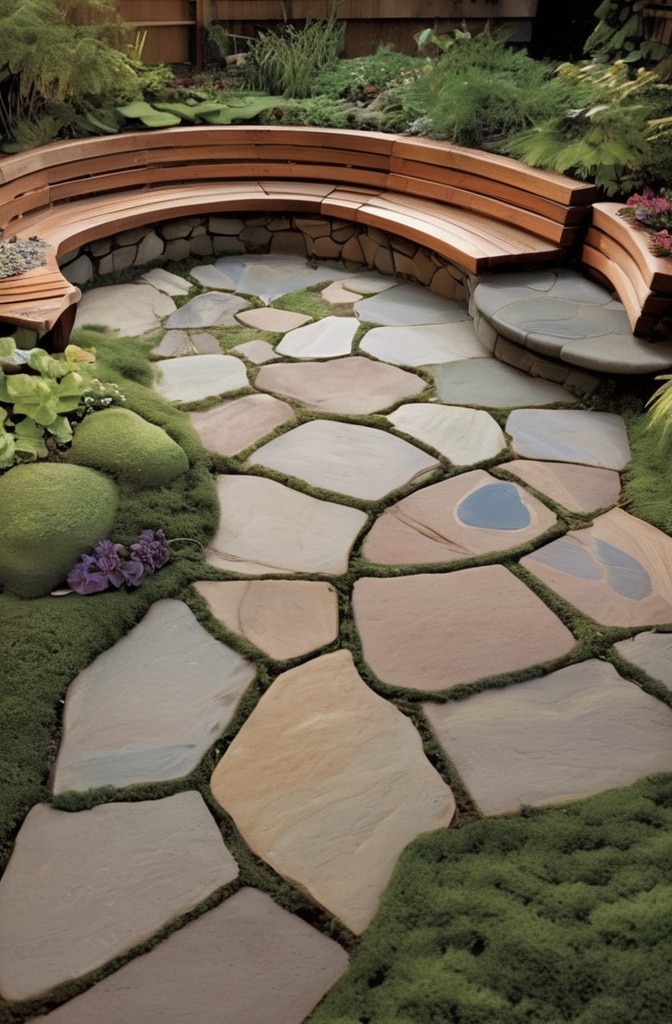
Breaking away from rigid grid patterns, irregularly shaped pavers arranged in organic, flowing layouts are creating some of the most distinctive patios of 2025. These designs mimic natural stone arrangements found in Japanese gardens or Mediterranean courtyards.
While more challenging to install, these free-form designs create a sense of movement and flow that conventional layouts can’t match. They’re particularly effective in naturalistic landscapes where a highly geometric patio would feel out of place. I’ve found that these layouts require more planning but result in spaces that feel like theyve been there forever.
10. Indoor-Outdoor Continuity
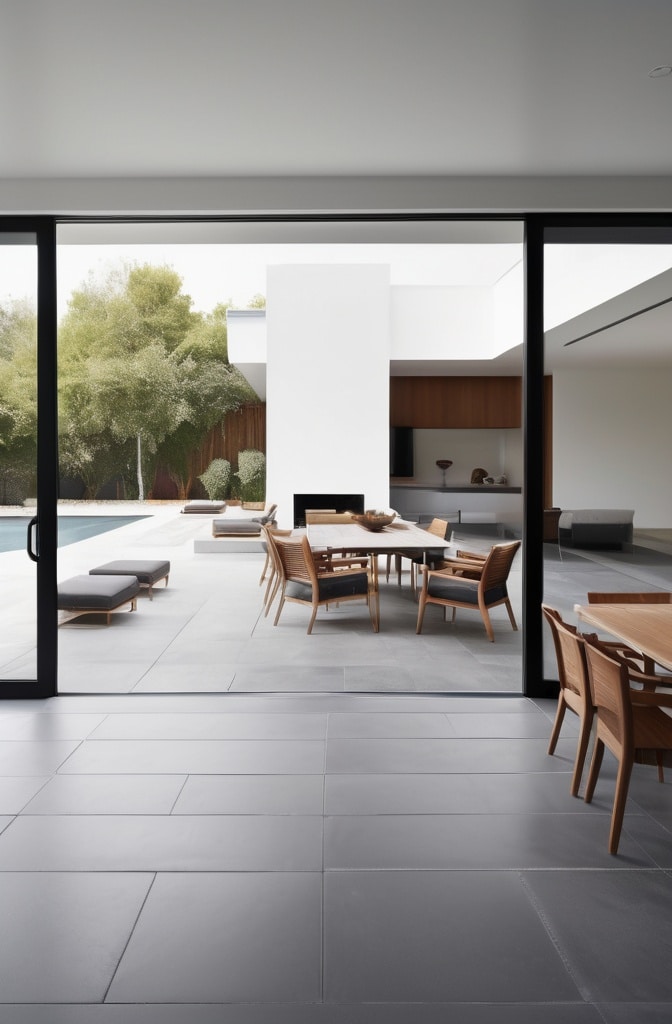
The boundary between indoor and outdoor spaces continues to blur in 2025, with pavers playing a key role in this transition. Using the same or very similar flooring materials for interior floors and patio surfaces creates a seamless visual flow between spaces.
This trend is especially prominent in homes with large sliding or folding glass doors that open to the patio. When the doors are open, the continuous flooring makes the patio feel like a natural extension of the indoor living area. The psychological effect is powerful – suddenly your living space feels twice as large.
11. Paver-Integrated Fire Features
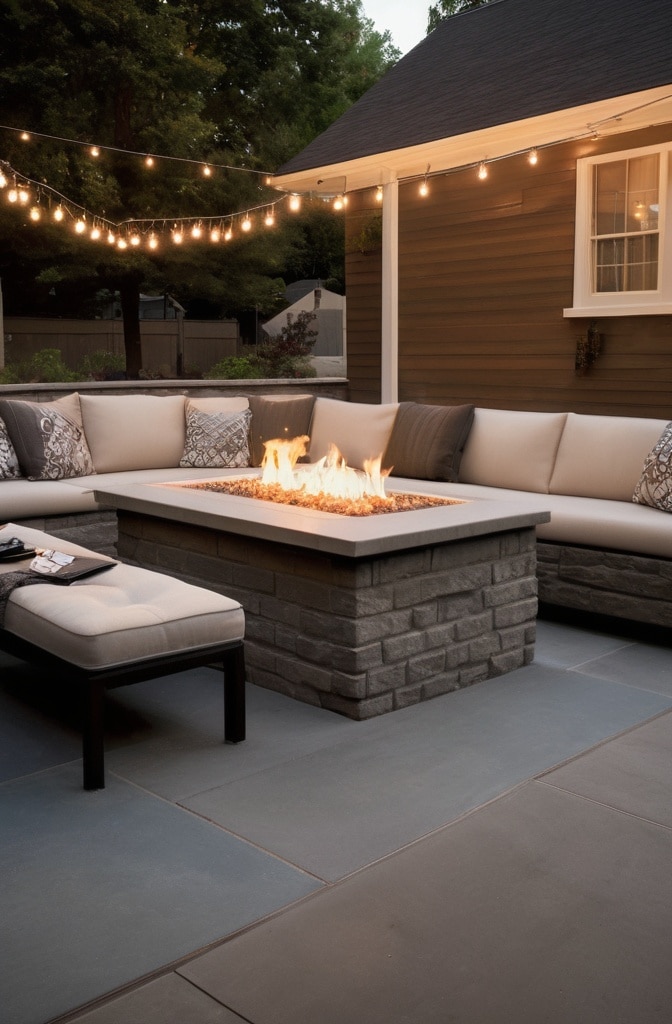
Fire features have been incorporated into patios for years, but 2025 brings innovative designs that integrate these elements directly into the paver system itself. Linear fire features embedded within paver borders or fire tables that appear to rise organically from the patio surface create dramatic focal points.
These integrated features eliminate the “afterthought” appearance of portable fire pits and create more cohesive design statements. Many of these systems run on clean-burning natural gas or propane, making them environmentally friendly as well as visually striking. My clients are always blown away by how these features transform their space after sunset.
12. Zoned Patio Designs

As outdoor living continues to evolve, we’re seeing more sophisticated zoning of patio spaces. Different paver colors, patterns, or materials are being used to designate cooking areas, dining spaces, conversation pits, and relaxation zones.
This thoughtful delineation helps large patios feel organized and purposeful rather than vast and empty. Subtle changes in elevation or the introduction of borders can further emphasize these distinct zones. The best designs maintain a cohesive overall look while clearly defining each area’s function.
13. Minimalist Japanese-Inspired Designs
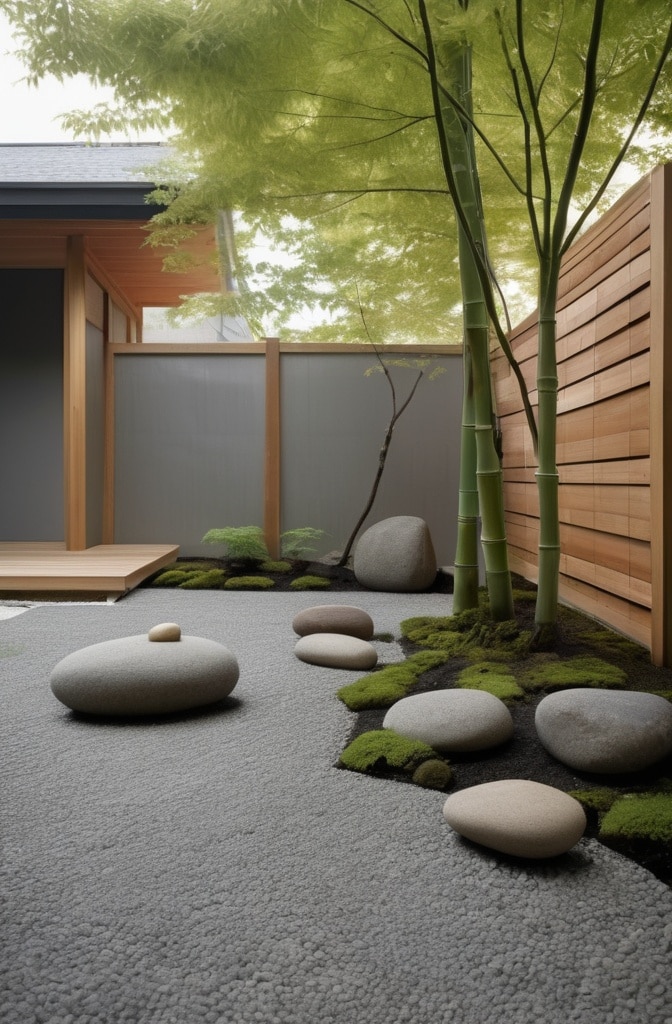
The Japanese aesthetic of simplicity, restraint, and harmony with nature has strongly influenced paver patio design in 2025. Clean lines, thoughtfully placed individual pavers, and negative space are hallmarks of this approach.
These designs often incorporate elements like carefully positioned boulders, simple water features, or strategically placed specimen plants. The result is a meditative space that feels both contemporary and timeless. Less really can be more – I’ve designed patios with just 40% paved surfaces that feel more complete than fully paved spaces.
14. Vintage and Reclaimed Materials
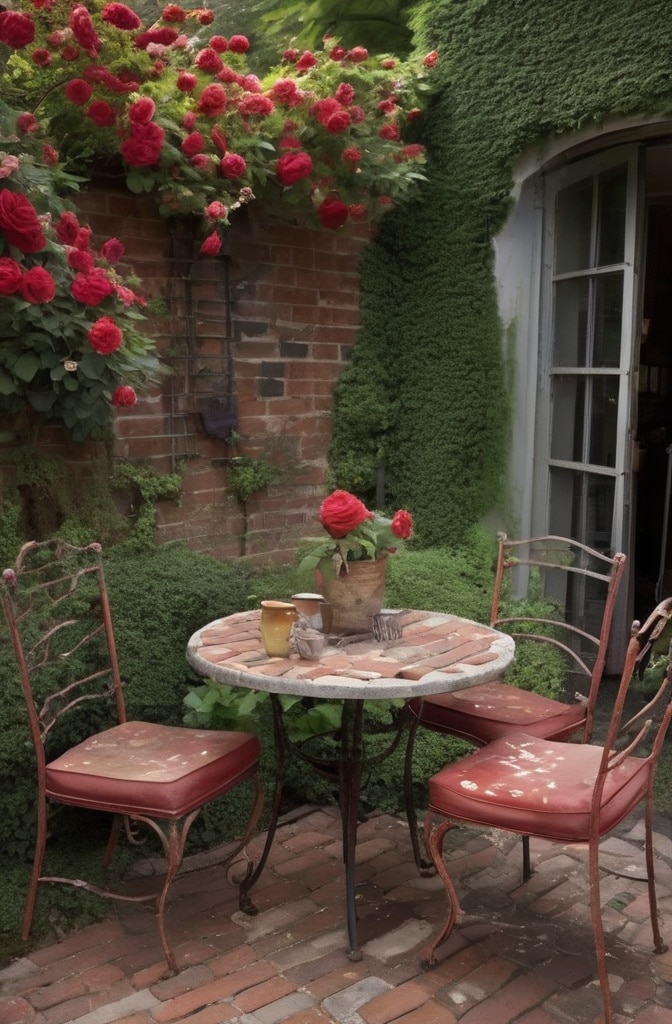
In reaction to mass-produced materials, many homeowners are embracing the character and sustainability of reclaimed pavers. Antique brick, salvaged stone, and repurposed concrete pavers bring history and uniqueness to outdoor spaces.
These materials often feature distinctive patinas, subtle color variations, and signs of weathering that new products try to imitate but can never truly duplicate. Besides their aesthetic appeal, using reclaimed materials reduces environmental impact. Some of my most satisfying projects have involved pavers with fascinating histories – from old factory floors to dismantled historic buildings.
15. Modular Paver Systems
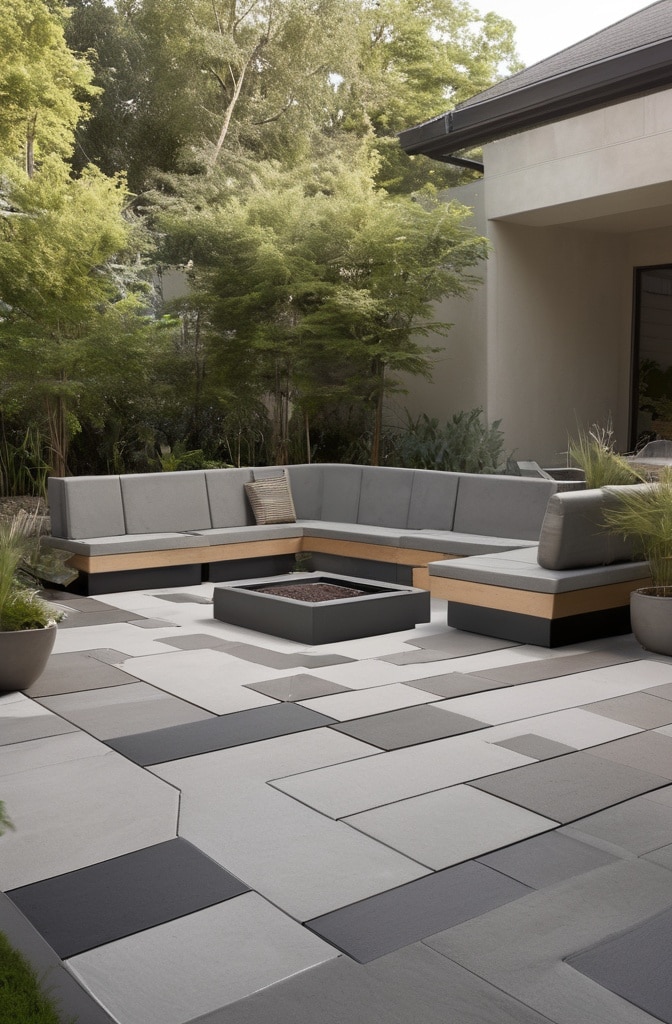
Flexibility is a key trend for 2025, with modular paver systems allowing homeowners to adapt their outdoor spaces as needs change. These systems feature interlocking components that can be rearranged or expanded with minimal disruption.
This approach is particularly appealing to younger homeowners who value adaptability and may want to modify their outdoor spaces as families grow or entertaining needs evolve. Some systems are specifically designed for DIY installation, making them accessible to handy homeowners. I always tell my younger clients to think about there patio as something that can grow with them.
16. Terrazzo-Inspired Pavers
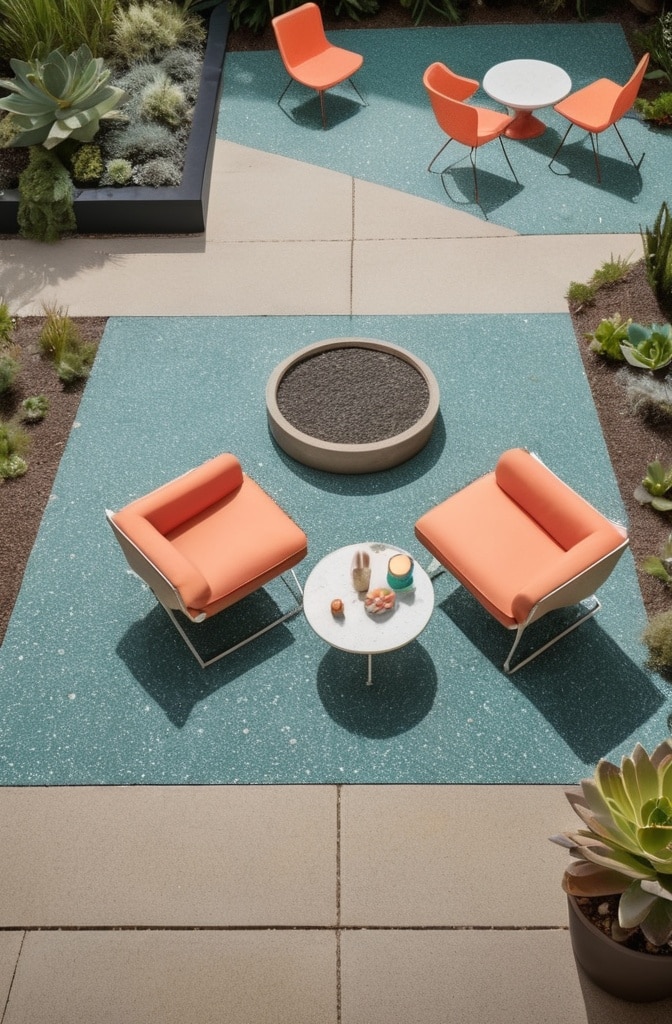
Terrazzo, with its distinctive speckled pattern, has made a comeback in interior design and is now making its way outdoors. Terrazzo-inspired pavers feature colorful aggregate embedded in a concrete base, creating vibrant, playful surfaces.
These pavers bring a mid-century modern aesthetic to contemporary outdoor spaces and offer virtually unlimited color combination possibilities. While authentic terrazzo installation is labor-intensive and expensive, these prefabricated pavers make the look accessible to more homeowners. The visual texture they create adds interest even to the simplest patio layouts.
17. Curved and Circular Designs
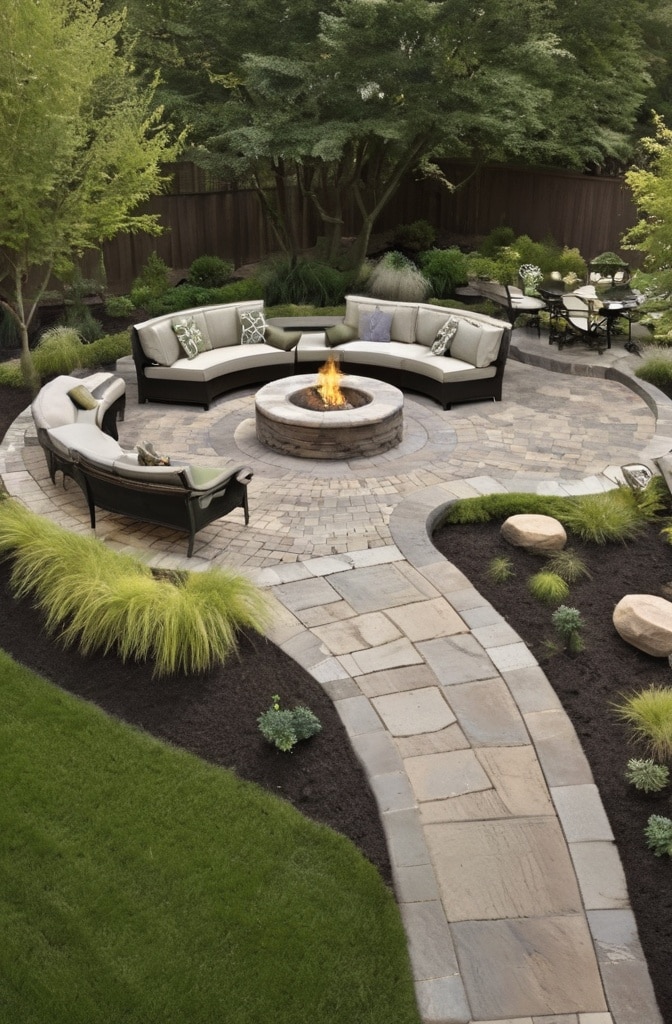
Moving away from sharp angles and straight lines, curved patio designs have gained prominence in 2025. Circular, elliptical, or freeform curved patios create a softer, more welcoming atmosphere than their rectangular counterparts.
These organic shapes often better complement natural landscape features and can make outdoor spaces feel more integrated with the surrounding environment. While installation is more complex, requiring more cuts and creating more waste, the visual impact is worth the additional effort and expense. Nothing beats the feeling of a perfectly executed radius in a paver design.
18. Layered Elevation Changes
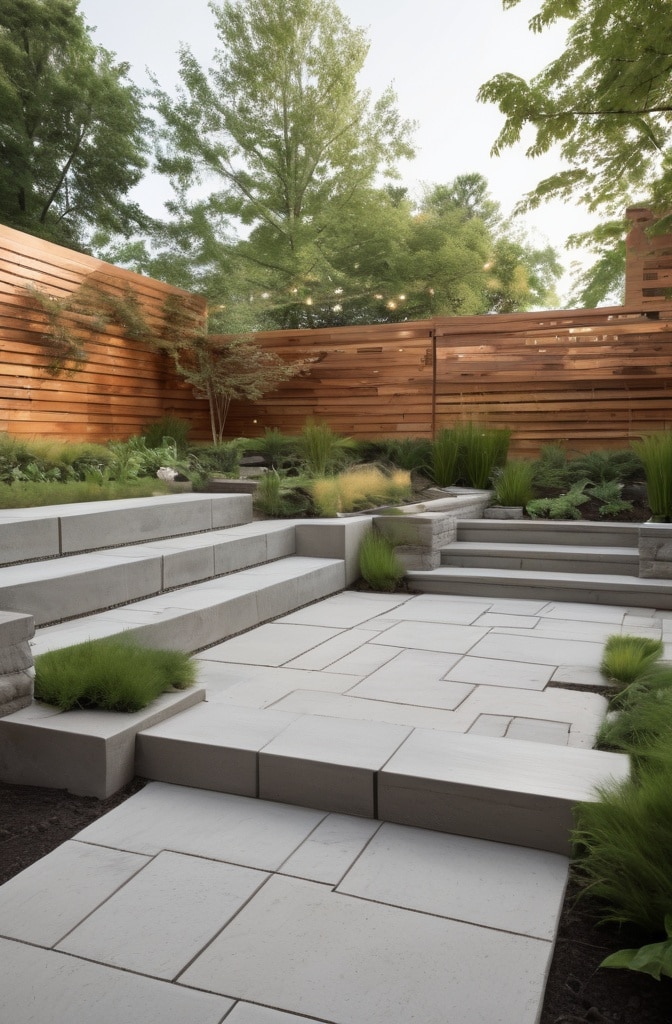
Flat patios are giving way to more dynamic spaces with subtle changes in elevation. Short steps, gentle ramps, or terraced sections add visual interest and help define different functional areas.
These level changes can also help navigate sloped sites more gracefully than single-plane designs. When thoughtfully implemented, elevation changes create natural traffic patterns and enhance the three-dimensional quality of outdoor spaces. I’ve found that even a six-inch height difference can dramatically change how people experience a space.
19. Paver Art and Inlays
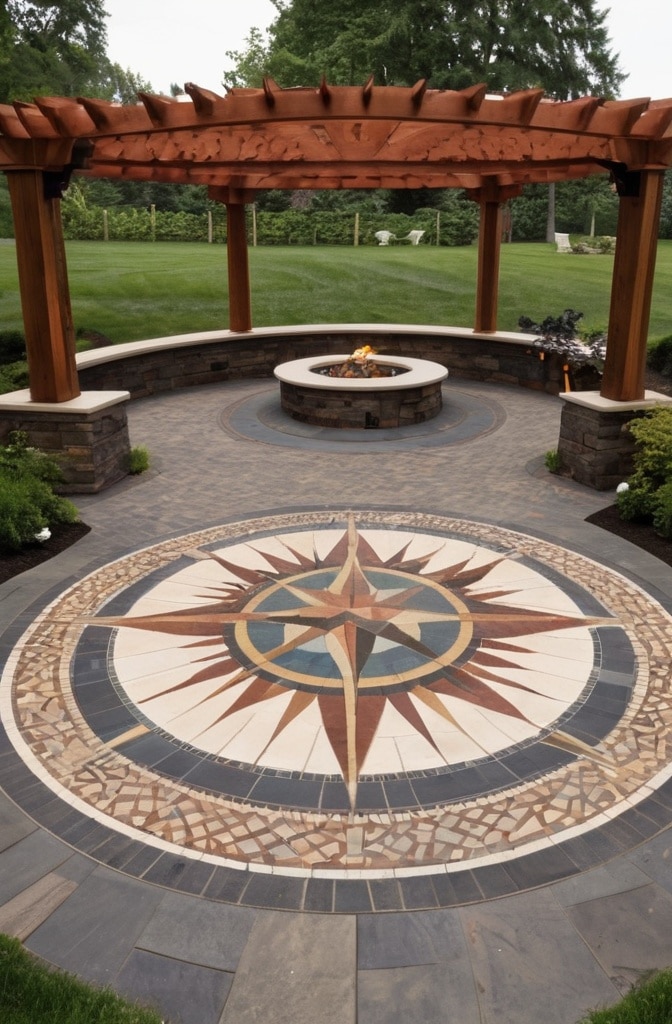
For truly personalized outdoor spaces, homeowners are incorporating custom art and inlays into their paver patios. These range from simple compass designs to elaborate mosaics, family crests, or abstract patterns.
Specialized cutting techniques, including water-jet cutting, have made complex custom designs more accessible, though still premium features. These artistic elements become focal points and conversation starters, elevating patios from merely functional spaces to expressions of personal style. One client had me create a paver replica of their favorite painting – it was chalenging but absolutely worth it.
20. Eco-Friendly and Sustainable Materials
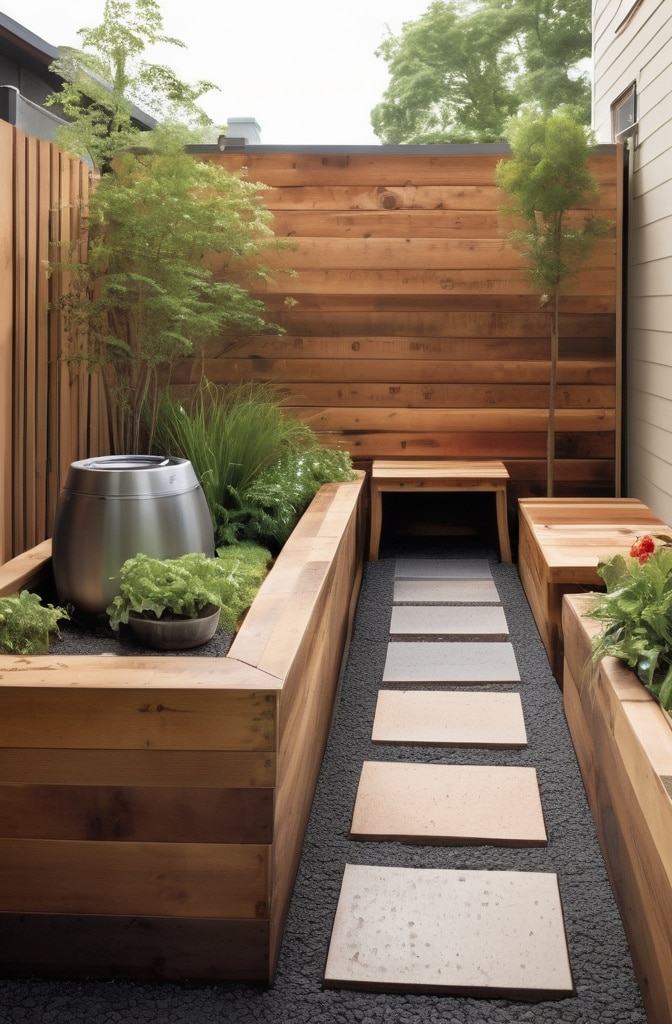
Environmental consciousness continues to drive paver innovation in 2025. Manufacturers are producing pavers from recycled plastics, crushed glass, reclaimed rubber, and other post-consumer materials.
These eco-friendly options often feature unique colors and textures unavailable in traditional materials. Besides their environmental benefits, many of these pavers offer practical advantages like enhanced slip resistance or improved durability. The latest generation of these materials has finally overcome the “recycled look” stigma that held back earlier products.
21. Dramatic Lighting Integration
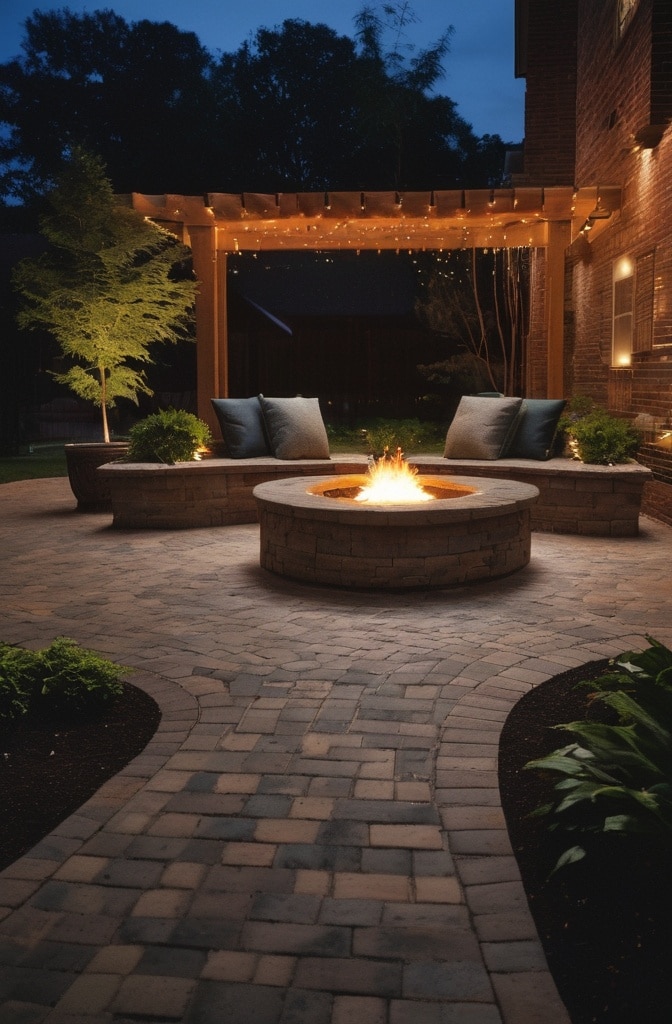
Lighting has become an integral part of paver patio design rather than an afterthought. In 2025, we’re seeing sophisticated integration of lighting elements within and around paver installations.
From perimeter lighting that outlines the patio’s shape to inset lights that create patterns or guide movement, these intentional lighting designs transform patios after dark. Solar-powered options have become more reliable and powerful, making them viable alternatives to wired systems in many applications. A well-lit patio extends its usability by hours everyday.
22. Mediterranean-Inspired Designs
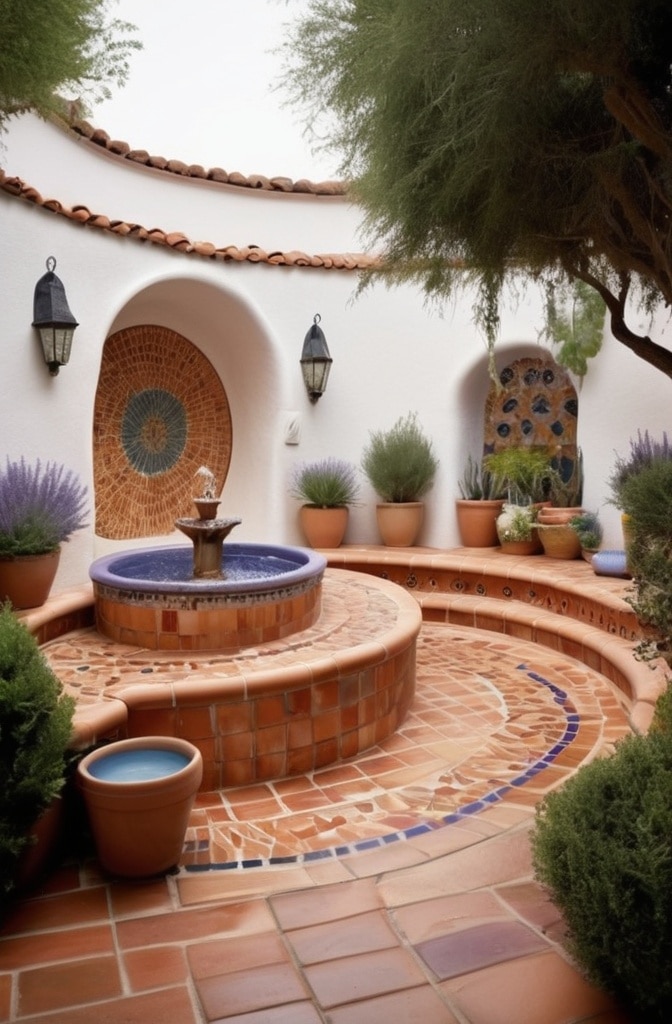
The warm, inviting aesthetic of Mediterranean outdoor spaces has influenced paver patio design in 2025. Terracotta tones, intricate patterns inspired by Spanish tiles, and the liberal use of curves characterize this style.
These designs often incorporate built-in seating, planting areas, and water features to create immersive outdoor rooms. The approach embraces imperfection and weathering, allowing patios to age gracefully and develop character over time. My clients who’ve traveled to countries like Spain, Italy, and Greece often want to recreate that relaxed feeling in there own backyards.
23. Winter-Ready Patio Designs
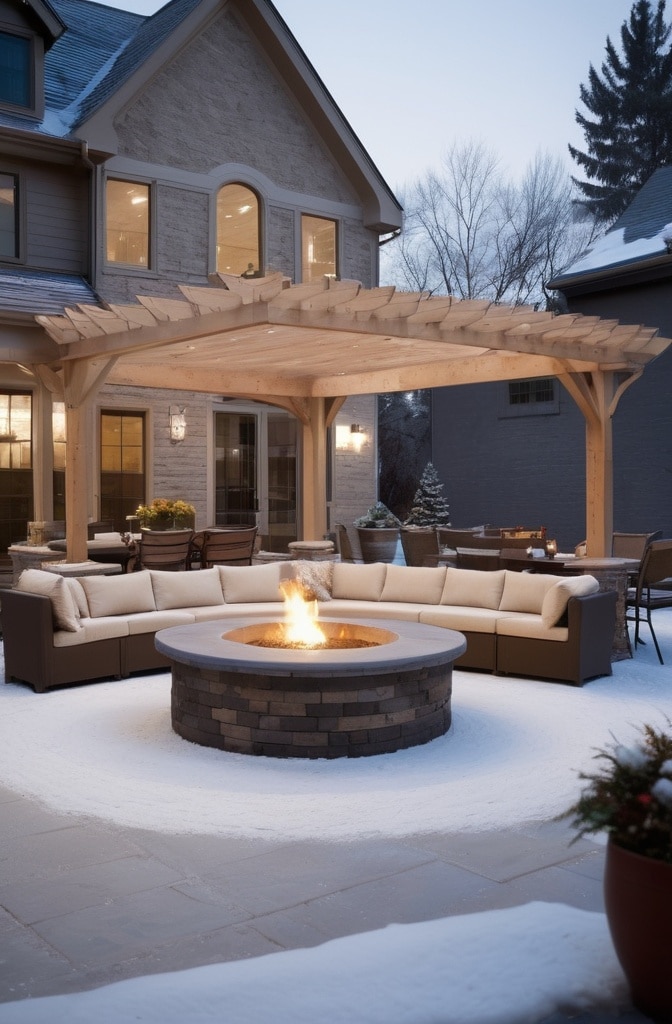
As outdoor living becomes a year-round pursuit, paver patios designed specifically for cold-weather enjoyment have emerged as a distinct trend. These designs often incorporate built-in heating elements, wind barriers, and covered sections.
Materials chosen for their thermal properties help these patios retain heat and dry quickly after snow or rain. Strategic orientation to maximize winter sun exposure and minimize wind exposure further enhances cold-weather functionality. Even my clients in Minnesota are using their patios ten months a year now.
24. Paver Pathways as Design Elements
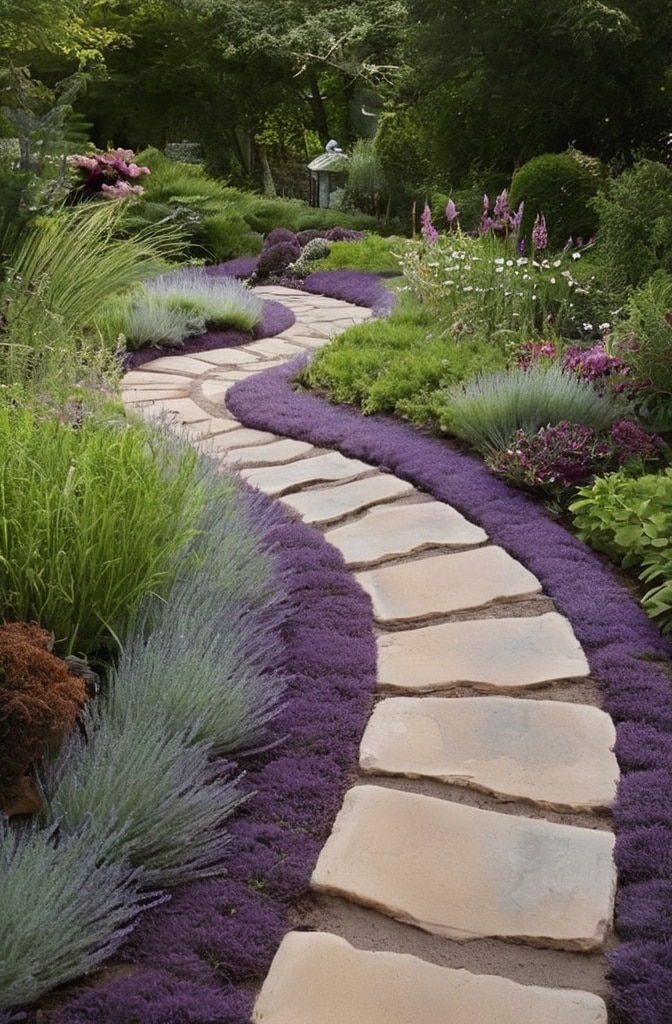
Pathways are no longer merely functional connections between spaces but have become design features in their own right. Imaginative paver paths with varying widths, undulating courses, or unexpected material changes create visual interest throughout the landscape.
These paths often incorporate sensory elements like aromatic plants that release scents when brushed against or textural changes that can be felt underfoot. Thoughtfully designed paths create a sense of journey and discovery as people move through outdoor spaces. The path to the destination has become as important as the destination itself.
25. Customizable Modular Furniture Integration
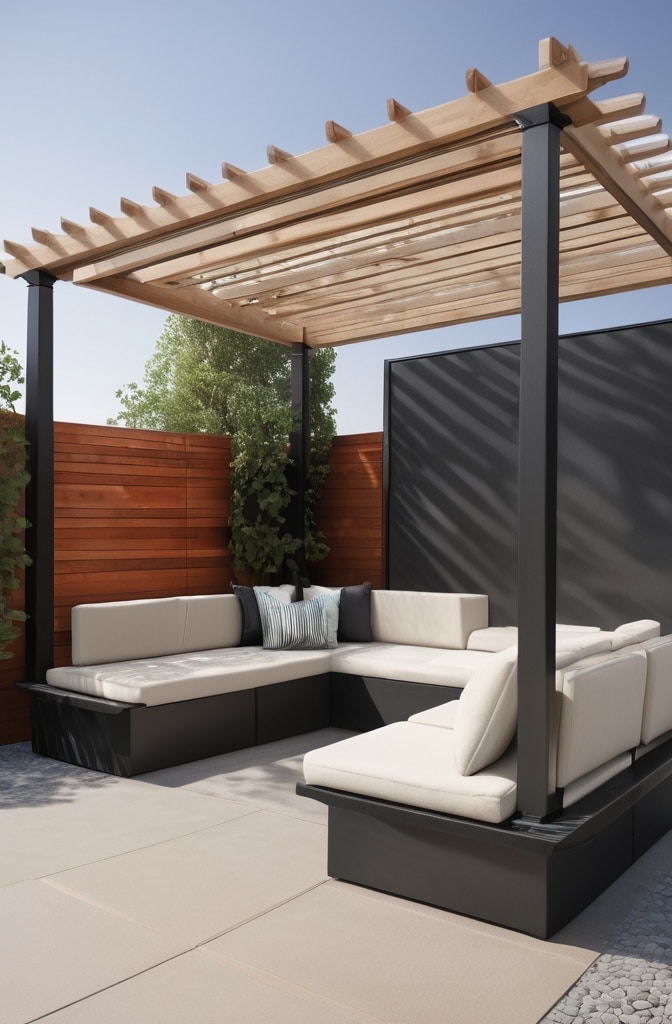
The latest paver systems include modular components specifically designed to integrate with outdoor furniture, eliminating the awkward relationship between patio surfaces and the elements placed upon them.
These systems include paver-matched bases for outdoor kitchens, modifiable supports for built-in seating, and foundations for pergolas or shade structures. This integrated approach creates more cohesive outdoor rooms where everything appears to have been conceived as a unified whole. My favorite recent project incorporated a built-in lounging platform that seemed to float above the main patio level.
The Future Underfoot
The paver patio trends of 2025 reflect our evolving relationship with outdoor spaces. No longer content with basic hardscaping, homeowners are demanding outdoor environments that are extensions of their interior spaces—thoughtfully designed, technologically enhanced, and personally meaningful.
As materials science, installation techniques, and design approaches continue to advance, the humble patio has transformed into something much more significant: an outdoor room that can be as comfortable, functional, and expressive as any indoor space. Whether you’re planning a complete backyard transformation or a simple refresh, these trends offer inspiration for creating an outdoor space that’s perfectly suited to your lifestyle.
The only limit is your imagination—and perhaps your budget. But with the wide range of options available at every price point, creating a distinctive outdoor living space has never been more accessible. Your perfect patio awaits.

Mariana is the founder and voice behind Home Nookery, a curated blog dedicated to home design, décor inspiration, and cozy living. With a passion for creating beautiful, functional spaces, Mariana shares practical tips, styling ideas, and thoughtful insights to help readers turn their houses into homes. Whether you’re redesigning a room or just adding a touch of charm, she’s here to guide you with creativity and heart.
